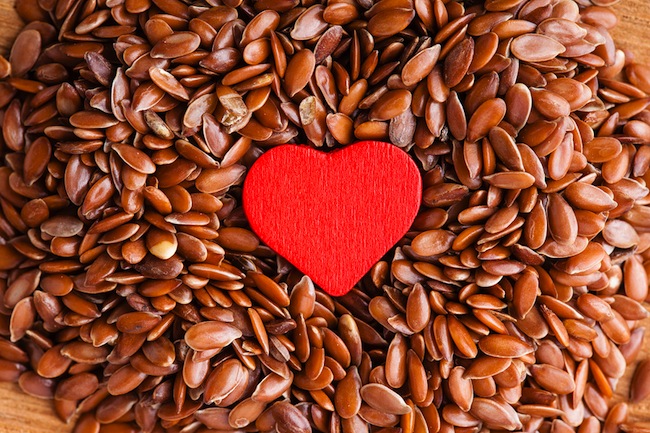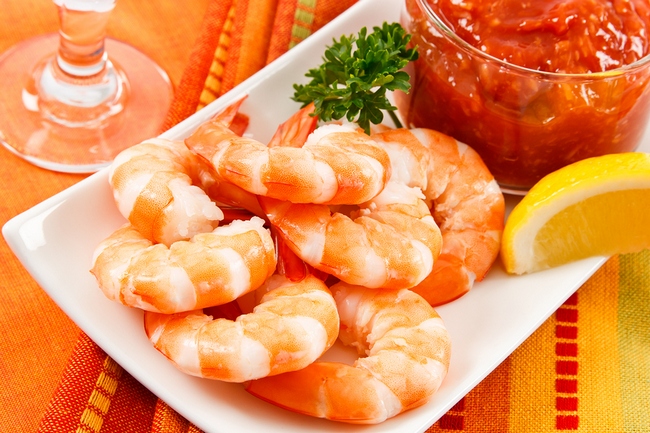- Make It Yourself Lavender Heart-Shaped Bath Bombs!
- 20 Things You Never Knew About “Down There”
- 12 Best Foods For Those Suffering From Arthritis Pain
- 12 Personal Hygiene Mistakes Almost Everyone Makes (Mom Never Told You About #4!)
- 15 Medicinal Plants And Herbs From The Cherokee People
- 12 Mind-Blowing Benefits Of Drinking Coconut Water During Pregnancy
- 12 Outstanding Winter Foods That Won’t Fatten You Up Like A Christmas Turkey
Could Your Favorite Foods Be Poisoning You?

Photo credit: bigstock
Most people do make genuine efforts to make healthy and safe food choices every day. However, despite our best efforts, sometimes what we think is something healthy is actually causing us great harm. Some plants, as well as some animals, absorb toxins from their environment, such as cadmium, much more easily than others. This means that we should try to avoid these common foods that are contaminated with cadmium, in order to prevent more serious health problems later on.
For about the past 10 years or so, flax has been touted as a super healthy food. It contains large amounts of those healthy omega-3 fatty acids, fiber, and high levels of lignins. Women who hope to avoid becoming a breast cancer statistic have been eating these seeds and taking supplements after reading that flax has protective phytoestrogens. Unfortunately, researchers have also recently discovered that flax has cadmium, which is well-known for causing kidney problems, heart disease, osteoporosis, and the very breast cancer many women had hoped to avoid. It’s the soluble fiber in flax that increases it’s absorption of cadmium. The very plant itself sucks up cadmium from the land, and becomes a part of the plants fibers.
Cadmium is an extremely toxic metal that has a very low permissible exposure limit. In fact the exposure limit is so low that toxic levels can be reached even in situations where only trace quantities of this metal are found. The buildup of cadmium levels in our air, water, and soils have been occurring regularly, particularly in areas where there are industrial plants. Over exposure to cadmium has been a severe problem in Japan where people are eating rice that was grown in rice fields irrigated with cadmium contaminated water. This is so common that the Japanese have a name for this phenomenon: itai-itai disease.
SEE ALSO: 15 Ways to Help Your Body Fight Toxins
Flax that is planted in soils that have heavy contamination are, naturally, the ones that pose the biggest health threat. In certain parts of Canada, where most of the world’s flax plants are grown, the soils generally have high levels of cadmium. Two other large growers of flax, South and North Dakota, also have fields with high levels of cadmium. Of course, as you can imagine, China and India, are sure to have contaminated soils. In general, foods are not tested for heavy metal contamination, so that “certified organic” label you rely on is basically worthless when it comes to the amount of cadmium found in flax and flax seeds.
Continue to Page 2

Photo credit: bigstock
This isn’t the only food that is contaminated with this deadly toxic metal. Almost all shellfish have cadmium in their meats, due to environmental pollution. Shrimp from Asia, that is now very popular because it is inexpensive, is a perfect example. Oysters that have been harvested from both Canadian coasts are another contaminated food. Sunflowers, and their popular seeds, are also grown in contaminated soils and tend to absorb cadmium. You should think twice about buying any oil or seed butters that come from sunflower plants, especially if they are grown in the Dakota states. Rice is another crop that absorbs cadmium, and in the US, Contaminated Louisiana is the state where most American rice is grown. Also, if you enjoy dried apricots, try to buy varieties that are grown somewhere other than the contaminated soils of Turkey. Indian black mustard is another contaminated plant, and free range escargot snails tend to test high for cadmium contamination.
By the way, for those of you who might be smokers, or live with smokers, you should know that cigarettes are a significant source of cadmium exposure. Although there is usually less cadmium found in tobacco than in food, your lungs absorb this toxic metal more efficiently than your stomach does. Read more bitter truth of smoking.
Exposure to cadmium laden air causes flu like symptoms including fever, chills, and muscle aches. These issues resolve themselves after a week or so when the person is removed from the source of contamination. Continued or more severe exposure to polluted air causes pneumonitis, and pulmonary edema. Eating any significant amount of cadmium will cause immediate poisoning as well as severe damage to the kidneys and liver. Compounds or foods that contain cadmium are carcinogenic. Bones will become soft, which will cause breaks and fractures as well as pain in the joints and back. Kidneys will lose their function and the damage that cadmium causes kidneys is irreversible.
Some foods, such as flax, increase your cadmium levels, while others can help the body detox from cadmium. If you believe you may have consumed cadmium, doing a few detox programs, along with eating foods that will detox the liver, would be a wise move.
Sources:
































